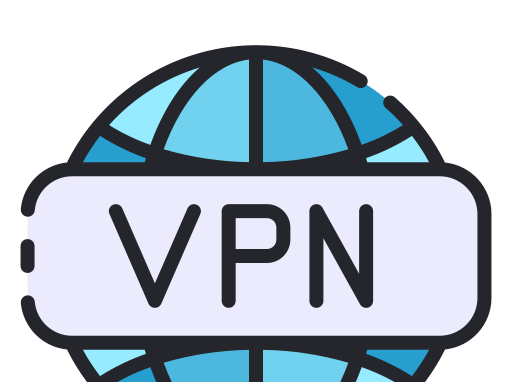

Table of Contents:
- Introduction to OpenVPN
- Understanding OpenVPN Protocol
- Benefits of Using OpenVPN
- Prerequisites for Setting Up OpenVPN on a VPS
- Step-by-Step OpenVPN Installation on a VPS
- Configuring OpenVPN on a VPS
- Connecting to OpenVPN on Android
- Connecting to OpenVPN on iOS
- Connecting to OpenVPN on Windows
- Connecting to OpenVPN on Linux
- Troubleshooting Common Issues
- Enhancing OpenVPN Security
- Conclusion
1. Introduction to OpenVPN
In today’s digital age, privacy and security have become paramount. With increasing online threats and surveillance, ensuring your data’s safety has never been more critical. OpenVPN stands out as one of the most reliable and versatile VPN solutions available. This comprehensive guide will take you through everything you need to know about OpenVPN, from its protocol to setting it up on a VPS and connecting various devices.
2. Understanding OpenVPN Protocol
OpenVPN is a robust and highly configurable VPN protocol that utilizes SSL/TLS for key exchange. It supports multiple encryption methods and is known for its ability to bypass firewalls and network restrictions. Here’s a closer look at the core components:
a. Encryption: OpenVPN supports various encryption standards, including AES-256, which ensures high security.
b. Authentication: It uses digital certificates and username/password authentication, enhancing the security layers.
c. Compatibility: OpenVPN works on multiple platforms, including Windows, macOS, Linux, Android, and iOS.
d. Flexibility: The protocol can be used in various configurations, including site-to-site, remote access, and even cloud-based solutions.
3. Benefits of Using OpenVPN
a. Security: OpenVPN provides robust security features, ensuring data integrity and confidentiality.
b. Flexibility: It can be configured for different use cases, from personal VPNs to complex enterprise solutions.
c. Open Source: Being open-source, OpenVPN is continuously reviewed and improved by the community.
d. Bypass Restrictions: It can circumvent geographical restrictions and censorship, providing unrestricted internet access.
4. Prerequisites for Setting Up OpenVPN on a VPS
Before diving into the setup process, ensure you have the following:
- A VPS with root access
- A domain or subdomain for the VPN server
- Basic knowledge of Linux command-line
- An SSH client like PuTTY (for Windows) or Terminal (for macOS/Linux)
5. Step-by-Step OpenVPN Installation on a VPS
Step 1: Update Your Server
sudo apt update && sudo apt upgrade -y
Step 2: Install OpenVPN and Easy-RSA
sudo apt install openvpn easy-rsa -y
Step 3: Set Up the CA Directory
make-cadir ~/openvpn-ca
cd ~/openvpn-ca
Step 4: Configure the CA Variables
Edit the vars file to set your desired configuration:
nano vars
Update the following fields:
export KEY_COUNTRY="Your Country"
export KEY_PROVINCE="Your Province"
export KEY_CITY="Your City"
export KEY_ORG="Your Organization"
export KEY_EMAIL="Your Email"
export KEY_OU="Your Organizational Unit"
Step 5: Build the Certificate Authority
source vars
./clean-all
./build-ca
Step 6: Generate Server Certificate and Key
./build-key-server server
./build-dh
openvpn --genkey --secret keys/ta.key
Step 7: Configure the OpenVPN Service
Create the server configuration file:
nano /etc/openvpn/server.conf
Add the following configuration:
port 1194
proto udp
dev tun
ca ca.crt
cert server.crt
key server.key
dh dh.pem
tls-auth ta.key 0
cipher AES-256-CBC
auth SHA256
user nobody
group nogroup
persist-key
persist-tun
status openvpn-status.log
verb 3
Step 8: Start and Enable OpenVPN
sudo systemctl start openvpn@server
sudo systemctl enable openvpn@server
6. Configuring OpenVPN on a VPS
After installing OpenVPN, you need to configure it to suit your needs:
Step 1: IP Forwarding
Enable IP forwarding to allow traffic to pass through the VPN:
sudo nano /etc/sysctl.conf
Uncomment the following line:
net.ipv4.ip_forward=1
Apply the changes:
sudo sysctl -p
Step 2: Configure UFW
Allow OpenVPN traffic through the firewall:
sudo ufw allow 1194/udp
sudo ufw allow OpenSSH
sudo ufw enable
Step 3: Create Client Configuration
Create a base configuration file for clients:
nano ~/client.ovpn
Add the following configuration:
client
dev tun
proto udp
remote your_server_ip 1194
resolv-retry infinite
nobind
user nobody
group nogroup
persist-key
persist-tun
ca ca.crt
cert client.crt
key client.key
tls-auth ta.key 1
cipher AES-256-CBC
auth SHA256
verb 3
7. Connecting to OpenVPN on Android
Step 1: Download the OpenVPN Connect App
Install the OpenVPN Connect app from the Google Play Store.
Step 2: Import Configuration
Transfer the client configuration file (client.ovpn) to your Android device. Open the OpenVPN Connect app and import the configuration file.
Step 3: Connect
Enter your username and password if prompted, then connect to the VPN.
8. Connecting to OpenVPN on iOS
Step 1: Download the OpenVPN Connect App
Install the OpenVPN Connect app from the App Store.
Step 2: Import Configuration
Transfer the client configuration file (client.ovpn) to your iOS device. Open the OpenVPN Connect app and import the configuration file.
Step 3: Connect
Enter your username and password if prompted, then connect to the VPN.
9. Connecting to OpenVPN on Windows
Step 1: Download the OpenVPN Client
Download and install the OpenVPN client from the official website.
Step 2: Import Configuration
Copy the client configuration file (client.ovpn) to the C:\Program Files\OpenVPN\config directory.
Step 3: Connect
Right-click the OpenVPN GUI icon in the system tray and select “Connect.”
10. Connecting to OpenVPN on Linux
Step 1: Install OpenVPN
bashCopy codesudo apt install openvpn
Step 2: Import Configuration
Transfer the client configuration file (client.ovpn) to your Linux machine.
Step 3: Connect
bashCopy codesudo openvpn --config client.ovpn
11. Troubleshooting Common Issues
a. Connection Failures: Check firewall settings, ensure the server is running, and verify the client configuration.
b. Slow Speeds: Check server load, optimize encryption settings, and ensure your network connection is stable.
c. DNS Leaks: Configure DNS settings on the client to prevent leaks.
12. Enhancing OpenVPN Security
a. Use Strong Encryption: Ensure you’re using AES-256 encryption for the best security.
b. Regularly Update Software: Keep your OpenVPN server and client software up to date.
c. Implement Multi-Factor Authentication: Add an extra layer of security by implementing MFA.
d. Monitor Logs: Regularly check OpenVPN logs for any unusual activity.
13. Conclusion
OpenVPN is a powerful tool for securing your online activities. By setting it up on a VPS and connecting various devices, you can ensure your data remains private and secure. Follow this guide to set up OpenVPN, and enjoy a safer internet experience.
- What is Android? How It works? Who owns it?
- The Ultimate Guide to OpenVPN: Protocols, VPS Setup, and Client Connections
- Optimizing VPS Management with Webmin and Virtualmin
- Ultimate Guide to Installing CyberPanel on Your VPS: Accessing the WebPanel, Setting Up Domains, Adding Websites, and Installing WordPress
- HDD vs SSD: Which is Better for Your Needs?
[…] Want to Install Cyber Panel? Read […]







Leave a Reply